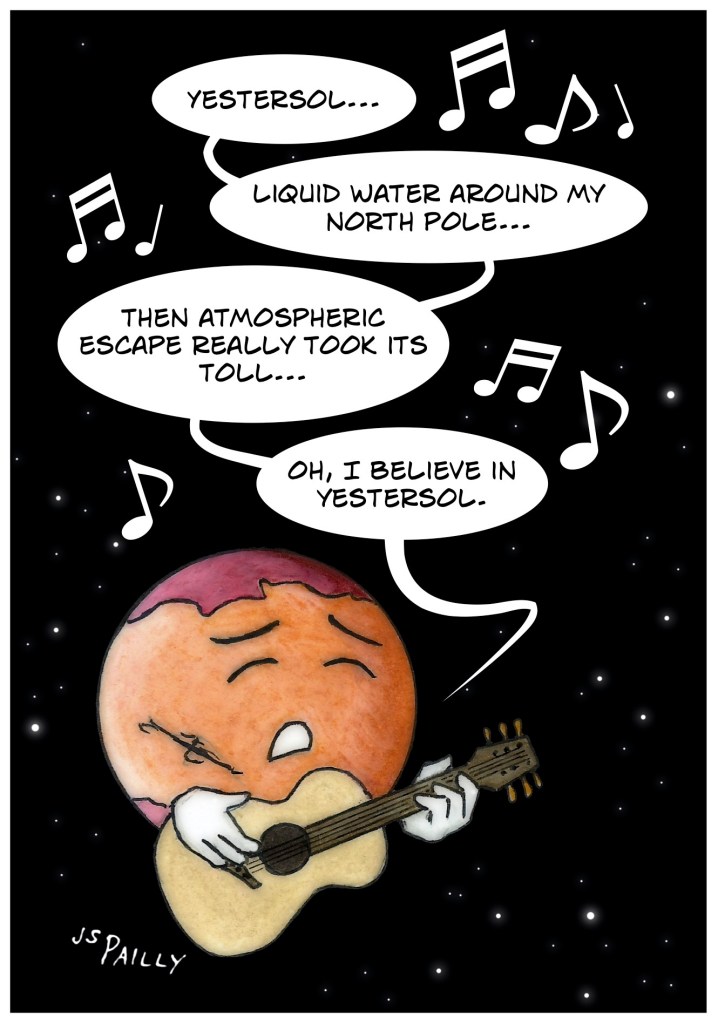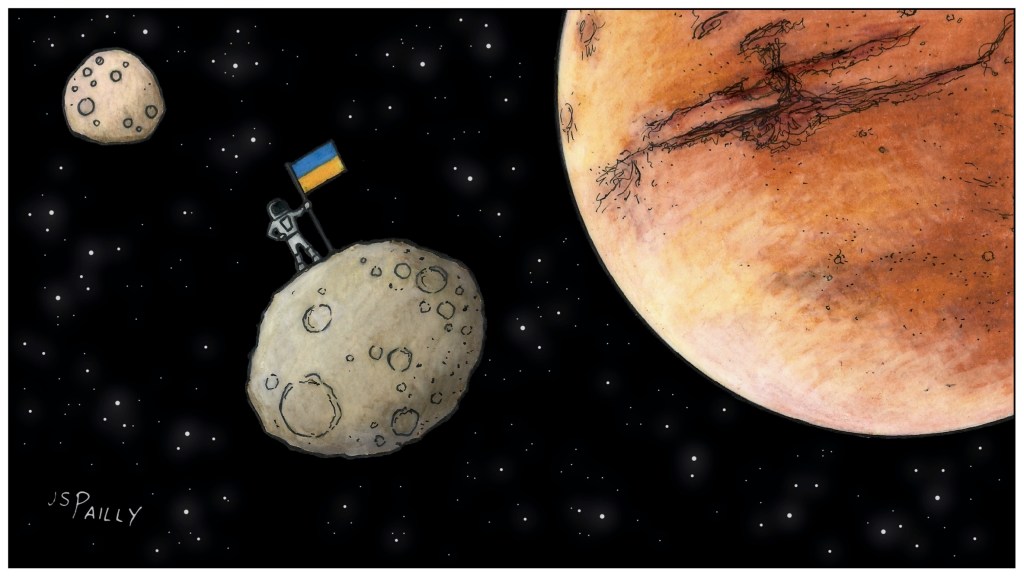Hello, friends! So I learned a new thing about Mars. Recent research, published just last year in Nature Astronomy, says that the nighttime sky on Mars sometimes glows green. Super bright green. Bright enough that this green glow would be visible to the human eye, if any human eyes were on Mars to see it. According to one source I read, this green Martian airglow would be comparable to “moonlit clouds on Earth.”
So how does this happen? Chemistry! During the day, sunlight zaps carbon dioxide (CO2) gas in Mars’s atmosphere, breaking it up into ionized carbon and oxygen atoms. At night, those ionized oxygen atoms recombine to form molecular oxygen (O2). This specific reaction—the formation of O2—produces a little light in the green and infrared parts of the spectrum. (Please note: I have glossed over an enormous amount of detail here. See the “Want to learn more?” section below for more information).
The infrared glow of O2 formation had been detected previously. A very faint green glow had also been detected over the dayside of Mars. The detection of a green glow at night—that is the new discovery! And also, this green glow is remarkably and astonishingly bright. Brighter, it seems, than anyone expected.
Which initially made me wonder: if this green airglow on Mars is that bright, how did it go undetected for so long? But then again, I sometimes overestimate how much we know about Mars. You’d think we’d know a lot by now. Mars is the second most thoroughly explored planet in the Solar System, after Earth. But in truth, we have just barely scratched the Red Planet’s red surface (and we know even less about all the other planets in our Solar System).
So I see this discovery as a reminder: no matter how much we think we know about space, there is still far, far more we need to learn.
WANT TO LEARN MORE?
This discovery was made by the European Space Agency’s ExoMars Mission, currently in orbit around Mars. Here is a press release from ESA about this discovery.
And here is an article from Universe Today, which goes into more detail about Mars’s airglow, the chemistry behind it, and the way Martian wind patterns and the changing of Martian seasons affect it.
And lastly, for those of you who want to look at the original research, here’s a link to the original research paper from Nature Astronomy (warning: you may encounter a paywall).
















